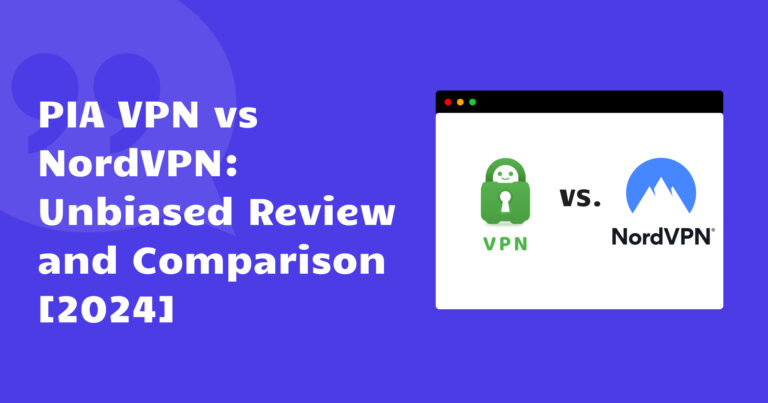We both understand the significance of effectively managing customer relationships for business growth. This necessitates the utilization of robust Customer Relationship Management (CRM) software tailored to suit your company’s specific requirements, such as Keap vs HubSpot.
Keap vs HubSpot stand out as two prominent players in this arena, each offering a suite of features designed to streamline customer interactions and drive revenue growth.
Let’s explore the strengths and weaknesses of both platforms, providing insights to help you make an informed decision on which CRM solution aligns best with your business objectives. 😎
So let’s get started! 💪
Table of contents
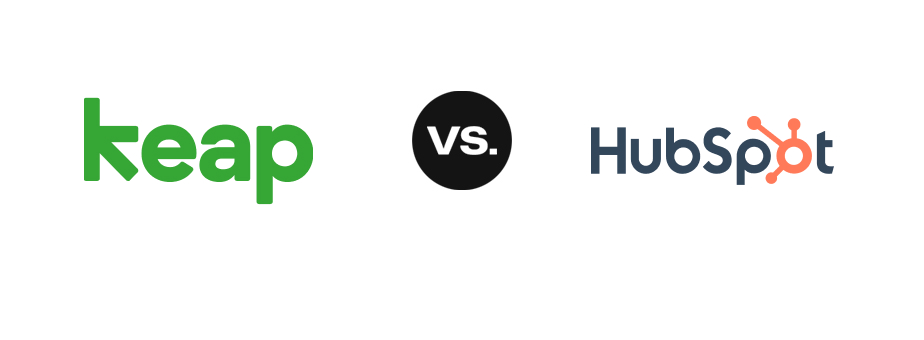
Keap, formerly Infusionsoft, is an all-in-one platform designed for small to midsize businesses. It combines CRM, email marketing, sales automation, and e-commerce tools, offering a comprehensive solution for managing customer relationships effectively.
In contrast, HubSpot provides a wider range of tools, including marketing, sales, customer service, and content management solutions. Its CRM platform is part of a larger ecosystem geared towards inbound marketing strategies, making it ideal for businesses aiming to attract, engage, and delight customers across multiple channels.
If you are in a hurry, here are some key points to keep in mind when deciding if Keap vs HubSpot is the right CRM solution for your team:
| Feature | Keap | HubSpot |
| Target audience | Small businesses, solopreneurs | All business sizes, particularly larger companies |
| Free plan | Yes, with limited features | Yes, with basic features |
| Pricing | More affordable plans, flat monthly pricing | Tiered pricing, additional costs for higher tiers and marketing features |
| Ease of use | Very user-friendly interface, focus on simplicity | Intuitive interface, but can have a steeper learning curve for advanced features |
| Contact management | Detailed contact profiles, tagging, custom fields | Comprehensive contact profiles, scoring, segmentation |
| Lead management | Lead capture forms, lead scoring, lead nurturing workflows | Landing pages, forms, lead routing, lead nurturing campaigns |
| Sales pipeline management | Visual drag-and-drop pipeline, customizable stages | Visual pipeline, deal stages, forecasting tools |
| Marketing automation | Basic email marketing, landing pages, basic automation (Lite plan) | Email marketing, landing pages, workflows, marketing automation software (paid plans) |
| Reporting & analytics | Dashboards with key metrics, basic reporting | Comprehensive dashboards, detailed reports, custom reporting |
| Integrations | Limited native integrations, Zapier for additional connections | Numerous native integrations, app marketplace |
| Customer support | Email and phone support, limited live chat | Live chat, email, phone support, extensive knowledge base |

Navigating the CRM Landscape
Understanding key considerations and industry trends can streamline the decision-making process and help you choose a CRM solution that best fits your needs.
Let’s explore together essential factors to consider when evaluating CRM platforms and how Keap vs HubSpot stack up in the competitive CRM landscape.
⚙️ Industry-Specific Requirements:
Different industries have unique CRM requirements based on their business models, customer demographics, and regulatory compliance standards.
For instance, Keap’s focus on small to midsize businesses may resonate well with service-based industries such as consulting firms, agencies, and e-commerce businesses, whereas HubSpot’s broader ecosystem caters to a diverse range of industries, including SaaS, retail, healthcare, and manufacturing.
⚙️ Integration Capabilities:
Integrating CRM software with existing tools and systems is crucial for optimizing workflows and data management processes.
Keap and HubSpot both offer extensive integration capabilities with popular third-party applications, allowing businesses to streamline their operations and leverage data from multiple sources seamlessly. Whether it’s integrating with accounting software, e-commerce platforms, or marketing automation platform, evaluating the compatibility and ease of integration with Keap or HubSpot is essential for maximizing efficiency and productivity.
⚙️ Mobile Accessibility:
In today’s mobile-driven world, the ability to access CRM data on the go is imperative for sales teams and field representatives.
Both Keap and HubSpot offer mobile applications that enable users to manage contacts, track deals, and access real-time insights from anywhere, anytime. Evaluating the usability and functionality of mobile apps provided by Keap and HubSpot can help businesses empower their teams with the flexibility and agility to stay productive while on the move.
⚙️ Data Security and Compliance:
Protecting sensitive customer data and ensuring compliance with data privacy regulations is a top priority for businesses operating in today’s digital landscape.
Keap and HubSpot prioritize data security and offer robust measures to safeguard customer information, including encryption, access controls, and compliance with GDPR and other regulatory frameworks.
⚙️ User Training and Support:
Adopting a new CRM platform involves a learning curve for users, ranging from sales representatives to marketing professionals and customer support teams.
Both Keap and HubSpot provide comprehensive training resources, including tutorials, documentation, webinars, and customer support channels, to assist users in mastering the functionalities of their respective CRM platforms.
Pros and Cons: Keap vs HubSpot
Each CRM tool brings a unique set of strengths to the table, addressing specific needs and preferences.
So, let’s explore both tools:
🟢 Keap
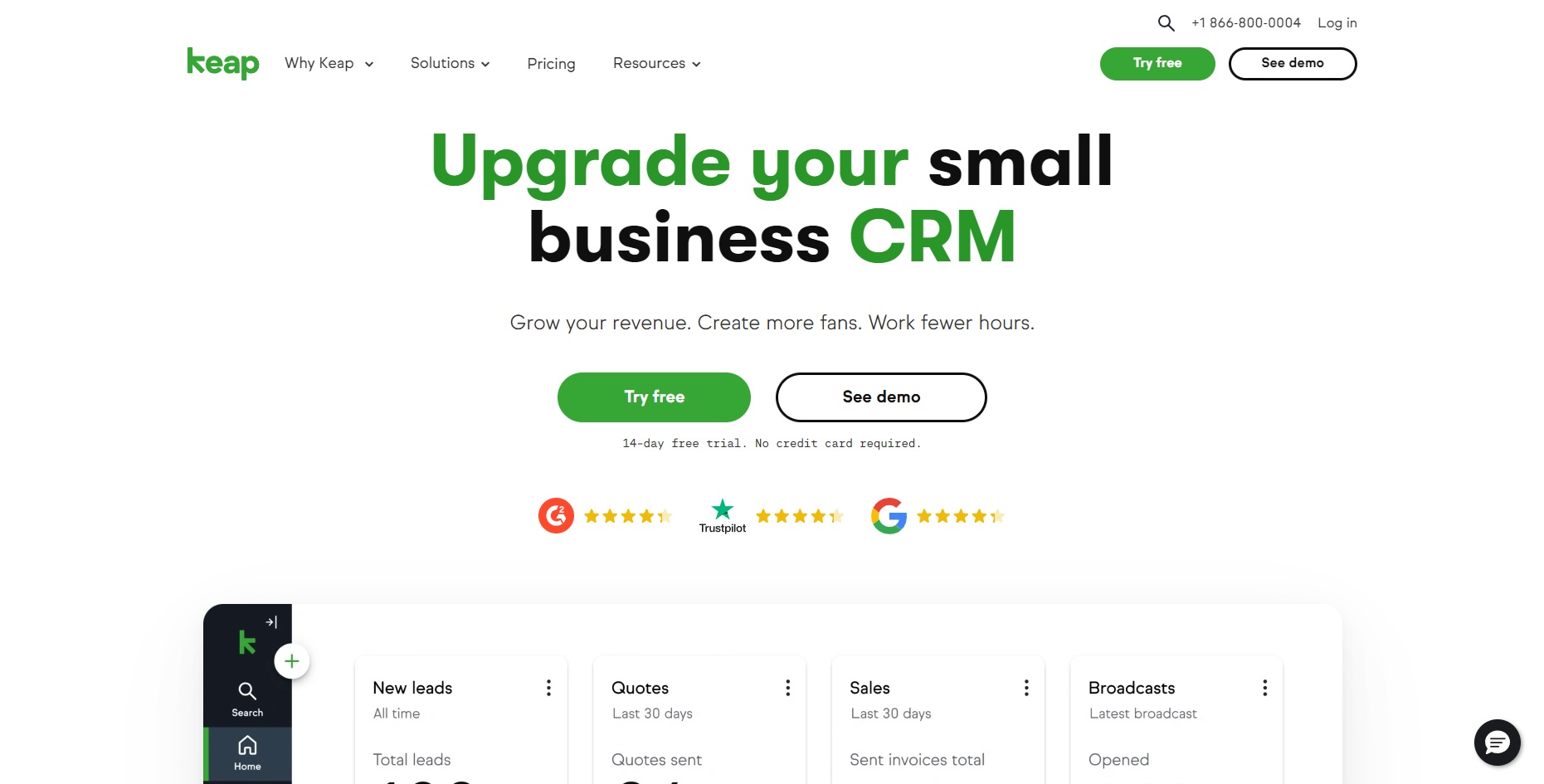
| Pros | Cons |
| Highly affordable: Offers competitive pricing plans, particularly for smaller businesses and solopreneurs. | Limited features: Lacks some features offered by competitors, like social media marketing and website builder. |
| User friendliness: Interface is clear and intuitive, making it easy to learn and navigate. | Scalability limitations: May not be suitable for large businesses with high data volumes and complex processes. |
| Strong automation features: Visual builder simplifies creating automate repetitive tasks and email campaigns. | Limited integrations: Native integrations are restricted, but Zapier can expand integration options. |
| Excellent customer support: Offers email, phone, and limited live chat support with knowledgeable representatives. | Less advanced reporting: Dashboards and reports are basic compared to some competitors. |
| Free plan available: Basic features like contact management and email marketing are accessible for free. |
🟢 HubSpot
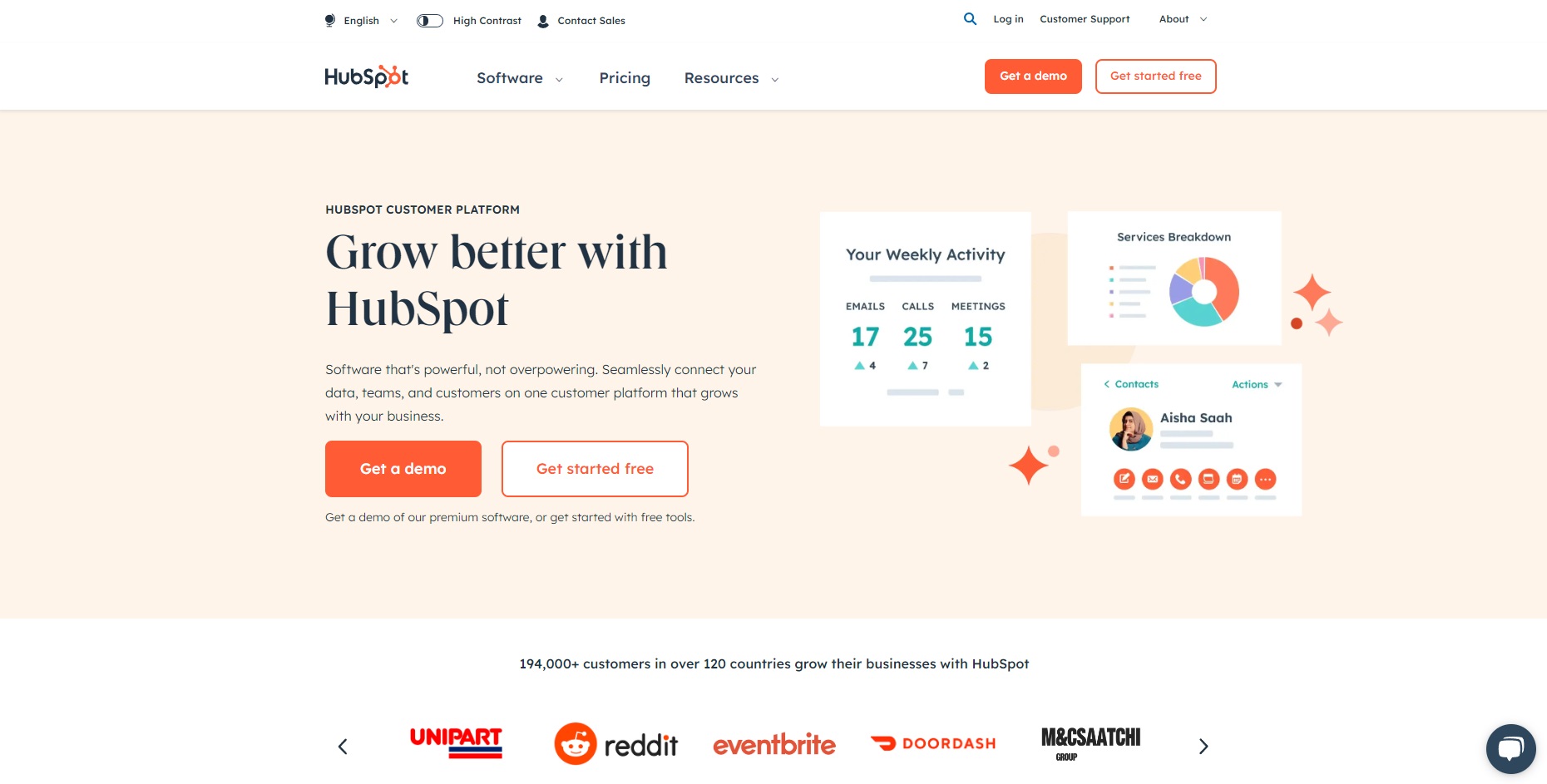
| Pros | Cons |
| Feature-rich: Offers a wide range of features for sales, marketing, and customer service, including automation, website builder, and social media tools. | Higher cost: Pricing can be expensive, especially for larger businesses or those needing advanced features. |
| Scalable: Can handle large data volumes and complex workflows, making it suitable for businesses of all sizes. | Steeper learning curve: More complex interface than Keap, requiring some initial investment in training and learning. |
| Comprehensive reporting: Provides detailed reports and dashboards with advanced customization options. | Free plan limitations: Free plan only offers basic features and limited contact storage |
| Extensive integrations: Offers numerous native integrations and an app marketplace for further functionality. | Potentially overwhelming for small businesses: Feature richness may be unnecessary and daunting for simple CRM needs. |
| Strong community and resources: Knowledge base, online forums, and active user community provide support and learning opportunities. |
On top of these, both Keap and HubSpot can integrate with Google Analytics and allow adding your Google Analytics tracking ID to track website traffic and user behavior.
However, they differ slightly in how they accomplish this:
Keap:
- Keap integrates with Google Analytics through Zapier (for paid plans) or manually adding the tracking code to your landing pages or website (available in all plans).
- It doesn’t have a built-in feature for directly adding your Google Analytics tracking ID within the CRM itself.
HubSpot:
- HubSpot has a built-in Google Analytics integration accessible on all plans.
- You can easily connect your Google Analytics account and add your tracking ID within the HubSpot settings.
Pricing Structure
Understanding the pricing structure of Keap vs HubSpot is crucial for your business to assess the affordability and value proposition of each CRM platform in relation to your budget constraints and specific requirements.
Here’s what both tools offer in terms of pricing:
Keap
Keap offers three pricing tiers designed to cater to the varying needs and budgets of businesses.

Free version
Keap does offer a free version, called Keap Lite. It’s a good option for solopreneurs or very small businesses just starting out with basic CRM needs.
Here’s what you can do with the Keap free version:
- Contact Management: Store up to 100 contacts and manage their information, including name, email, phone number, and notes.
- Email Marketing: Send up to 500 branded emails per month to your contacts. You can create basic email campaigns with drag-and-drop templates and track basic analytics like open rates and click-through rates.
- Landing Pages: Create and publish one simple landing page to capture leads. You can customize the design and add a form to collect contact information.
- Appointments: Schedule appointments with your contacts and receive reminders.
- Sales Pipeline: Manage your sales pipeline with basic stages like “Lead,” “Qualified,” and “Won.”
- Tasks and Notes: Create and manage tasks and notes for yourself and your team.
Limitations of the Keap Lite free version:
- Limited features compared to paid plans.
- You can only have 1 user.
- You can’t access advanced features like automation, reporting, or integrations.
- Your branding will be included in your emails and landing pages.
Now let’s see what the paid plans have to offer:
✅ Keap Pro
- Price: Starts at $199 per month (or $159 per month if you go with the annual payment plan)
- Best for: Solopreneurs and startups with a small contact list (1500 contacts) and 2 users (Additional users are $29 each)
- Features:
- Email marketing
- Marketing activities, sales reports & workflow automation
- Lead capture & automated follow up emails
- Lead & client management (CRM)
- Pipeline, quotes, invoices & payments
- Landing pages & online sales
- Text marketing (U.S.)* – Includes 3-month trial of voice and text, then $9/mo
- Dedicated phone line (U.S. & Canada)
- Separate work and personal calls with a business phone number for calls and texts
- Appointments
✅ Keap Max
- Price: Starts at $289 per month (or $229 per month if you go with the annual payment plan)
- Best for: Growing businesses with up to 2,500 contacts and 3 users (Additional users are $29 each)
- Features:
- Everything in Keap Pro, plus:
- Advanced lead optimization
- Enhanced landing pages & sales tools
- Ecommerce tools
- Advanced reporting
✅ Keap Ultimate
- Price: Starts at $349 per month (or $279 per month if you go with the annual payment plan)
- Best for: Established businesses with up to 2,500 contacts and 3 users (Additional users are $29 each)
- Features:
- Everything in Keap Pro, plus:
- Premium CRM & sales management
- Advanced marketing & sales tools
- Custom user access controls
- Affiliate management & collaboration
- Advanced reporting
⚠️ Important to note: They state that these prices does not include the one-time fee for their required onboarding process and services. Therefore you will have an extra fee to pay.
HubSpot
HubSpot offers free and tiered pricing structure for its various software solutions, catering to businesses of all sizes and needs.
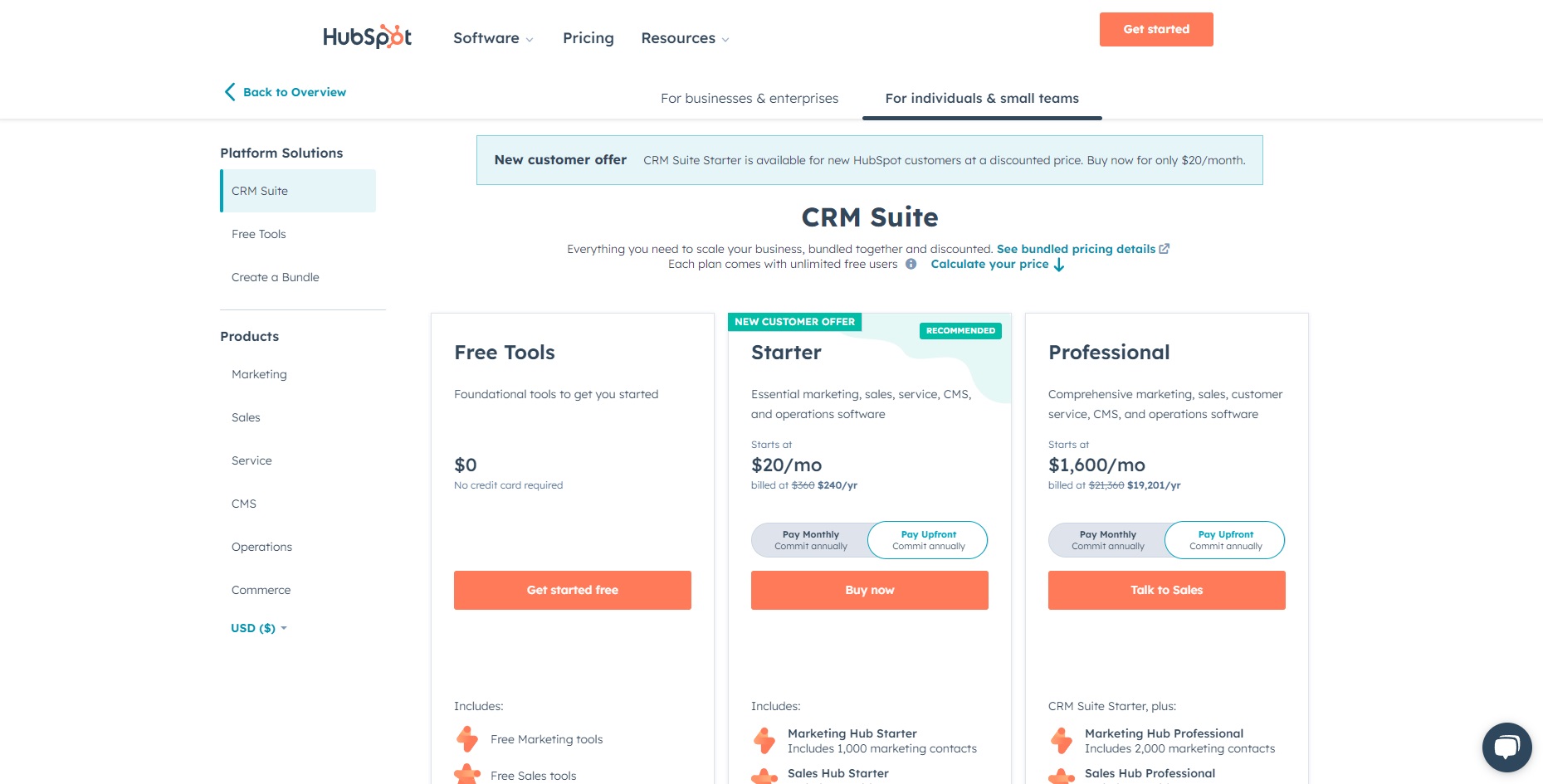
Free Version
HubSpot’s free version, called the HubSpot CRM Free, is a great option for startups, solopreneurs, and small businesses wanting to dip their toes into the world of CRM without breaking the bank.
Here’s what you can access with the HubSpot CRM Free:
Contact Management:
- Store up to 1 million contacts (a major perk compared to Keap Lite’s 100)!
- Manage contact information like name, email, phone number, and notes.
- Segment your contacts based on specific criteria for targeted communication.
Sales Tools:
- Manage your sales pipeline with basic stages like “Lead,” “Qualified,” and “Closed Won.”
- Send up to 2,000 branded emails per month for basic email marketing campaigns.
- Email tracking for opens, clicks, and unsubscribes with basic analytics.
- Schedule appointments with your contacts and receive reminders.
Reporting and Dashboards:
- Access basic reporting and dashboards to track key metrics like new contacts, deals closed, and revenue generated.
- Gain insights into your sales performance and identify areas for improvement.
Additional Features:
- Unlimited users, unlike Keap Lite’s single user limit.
- No HubSpot branding in your emails or landing pages.
- Access to the HubSpot mobile app for managing your CRM on the go.
Limitations of the HubSpot CRM Free:
- Limited features compared to paid plans, especially in marketing automation, website traffic analytics, and social media marketing.
- No landing page builder or content management system (CMS) access.
- Limited email sending capacity and basic analytics compared to Keap’s free version.
Now let’s see what the paid plans have to offer:
✅ Starter
- Price: Starts at $30 per month (or $20 per month if you go with the annual payment plan) – new customer offer
- Best for: Sales teams focused on closing deals and managing pipelines
- Features:
- All features of the Free CRM, plus:
- Sales pipeline management
- Email sequences and templates
- Sales automation workflows
- Revenue forecasting
- Meeting scheduling and integration
- E-signatures
- Includes 1,000 marketing contacts and 2 paid users
✅ Professional
- Price: Starts at $1,781 per month (or $1,600 per month if you go with the annual payment plan)
- Best for: Businesses needing an all-in-one solution marketing hub, sales, customer service, content management, and operations.
- Features:
- All features of the Starter plan, plus:
- Advanced marketing automation, landing page builder, email marketing with increased sending capacity, website traffic analytics, social media marketing tools, content management system (CMS)
- Enhanced sales pipeline management
- Revenue forecasting, quote and invoice generation
- Ticketing system with advanced automation, knowledge base creation, customer feedback tools, live chat, surveys, reporting and analytics
- SEO tools, website performance analytics, blog and landing page builder, A/B testing, content optimization tools
- 2,000 marketing contacts included (expandable for additional fees).
- 5 paid users for each included hub (expandable for additional fees).
- Priority support, dedicated account manager.
- Access to advanced features and integrations.
✅ Enterprise
- Price: Starts at $5,000 per month
- Best for: Established businesses and large teams with complex needs and high data volumes.
- Features:
- All features of the Professional plan, plus:
- Increased limits: More marketing contacts, paid users, storage, and API calls to handle larger volumes.
- Advanced automation: Granular control over workflows, custom objects and properties, and integrations for deeper customization.
- Predictive insights: AI-powered sales forecasting, marketing attribution, and churn prediction to inform strategic decisions.
- Scalability and security: Dedicated account manager, priority support, and enhanced security features for enterprise-grade operations.
- Customizable dashboards and reporting: Create tailored reports and dashboards with detailed data visualizations for comprehensive insights.
Important to note: HubSpot offers an AI-powered platform called HubSpot Smart CRM, that takes customer relationship management to a whole new level.
Here’s a glimpse into what makes it tick:
Unified Customer View: All your customer data lives in one place, from emails and calls to website visits and social media interactions. No more information silos!
Predictive Lead Scoring: Identify the hottest leads and prioritize your sales efforts effectively.
Conversational AI Tools: Chatbots power automated interactions, qualifying leads 24/7 and freeing up your team’s time for more strategic tasks.
Sales Automation: Streamline your sales pipeline with automated tasks like email follow-ups and task notifications.
Customer Service Insights: AI analyzes customer sentiment and identifies potential issues before they escalate.
This is only a fraction of what it can do! Check out more about it here.
Considerations for Your Budget
When assessing the pricing structures of Keap vs HubSpot, it’s essential to consider not only your current budget but also the scalability of your chosen CRM platform.
Keap’s tiered pricing plans offer businesses the flexibility to choose a plan that aligns with their current needs while providing room for growth as their customer base expands. This approach ensures that businesses can scale their investment in Keap according to their evolving requirements, making it an attractive option for organizations seeking long-term affordability and scalability.
In contrast, HubSpot’s pricing tiers cater to businesses of varying sizes and complexities, allowing organizations to adapt their CRM investment to their current needs while anticipating future growth. Whether it’s starting with the free CRM option for smaller businesses or opting for the Professional or Enterprise Growth Suites for larger enterprises, HubSpot’s pricing structure accommodates diverse budgetary constraints while offering scalability and customization options.
By assessing the value each platform provides within your budgetary constraints, you can ensure that your CRM solution not only meets your immediate needs but also aligns with your financial objectives in the long run. Whether you choose Keap for its scalable pricing plans or HubSpot for its diverse feature offerings, prioritizing affordability and scalability ensures that your CRM investment remains cost-effective and sustainable as your business grows.
Factors to Consider: Choosing the Right CRM for Your Team
When deciding between Keap vs HubSpot for your CRM platform, it’s important to conduct a thorough evaluation beyond mere feature and price comparisons.
Here are key considerations to help you determine whether Keap or HubSpot is the best fit for your team:
✅ Team Size and Structure:
Take into account the size and structure of your team. Keap’s user-friendly interface and holistic approach make it suitable for smaller teams seeking streamlined collaboration and quick adoption. Conversely, HubSpot’s diverse feature set and scalability cater to larger teams with varied roles and responsibilities, offering a comprehensive solution for managing complex customer relationships.
✅ Budget Constraints:
Evaluate your budget against the features offered in each platform’s pricing tiers. Keap’s tiered pricing plans provide flexibility for businesses of different sizes, while HubSpot’s pricing structure accommodates varying budget constraints with options ranging from a free CRM to advanced paid plans.
✅ Learning Curve:
Assess your team’s adaptability to new tools. Keap’s intuitive interface and straightforward workflows make it an ideal choice for teams prioritizing quick onboarding. HubSpot, with its extensive feature set and customization options, may require a deeper learning curve but offers powerful CRM capabilities once mastered.
✅ Integration with Existing Tools:
Consider how seamlessly each platform integrates with your existing suite of tools. Keap’s integration capabilities with third-party applications enhance its functionality and interoperability within existing workflows. HubSpot’s ecosystem of integrations and APIs offers versatility, although careful consideration of existing workflows may be necessary for a seamless transition.
✅ Customer Support and Training:
Assess the availability and quality of customer support and training resources provided by each platform. Keap vs HubSpot both offer a range of support options, including documentation, tutorials, and customer service channels, to assist users in maximizing the value of their CRM investment.
✅ Scalability and Customization:
Consider the long-term scalability and customization options offered by each platform. Keap’s comprehensive CRM and marketing automation suite caters to businesses looking for scalability and customization to accommodate growth. HubSpot’s integrated ecosystem and extensive marketplace of integrations provide flexibility for businesses to tailor their CRM solution to evolving needs.
Tip: You can play a key role by suggesting these options to your team. Let them explore both choices and decide which one suits them best. 😉
By carefully evaluating these factors based on your team’s unique dynamics and CRM goals, you can confidently select the platform that not only meets your immediate needs but also aligns seamlessly with your team’s future growth and success.
Wrapping up…
Deciding between Keap vs HubSpot may feel like a significant decision for your business. While both platforms offer robust features and boast dedicated user communities, the optimal choice ultimately hinges on how well it aligns with your team’s specific needs and workflow.
For teams prioritizing simplicity and streamlined customer relationship management, Keap emerges as a dependable option. With its user-friendly interface, emphasis on contact management, and integrated marketing automation tools, it facilitates efficient execution and collaboration across sales and marketing functions.
On the other hand, if your team values a comprehensive suite of features and the flexibility to customize workflows, HubSpot platform presents itself as a versatile solution. Offering a wide range of features including marketing, sales, and customer service functionalities, along with extensive customization options and integrations, it empowers businesses to design CRM strategies tailored to their unique requirements.
It’s essential to remember that this decision isn’t about one platform being superior to the other. Both Keap and HubSpot provide free plans and trial periods, allowing businesses to explore their offerings, gather feedback from team members, and determine which CRM solution best aligns with their project management goals and objectives.
May your customer relationships flourish, your sales pipeline thrive, and your business grow sustainably with the CRM platform that resonates most with your team’s vision and objectives. 💼


